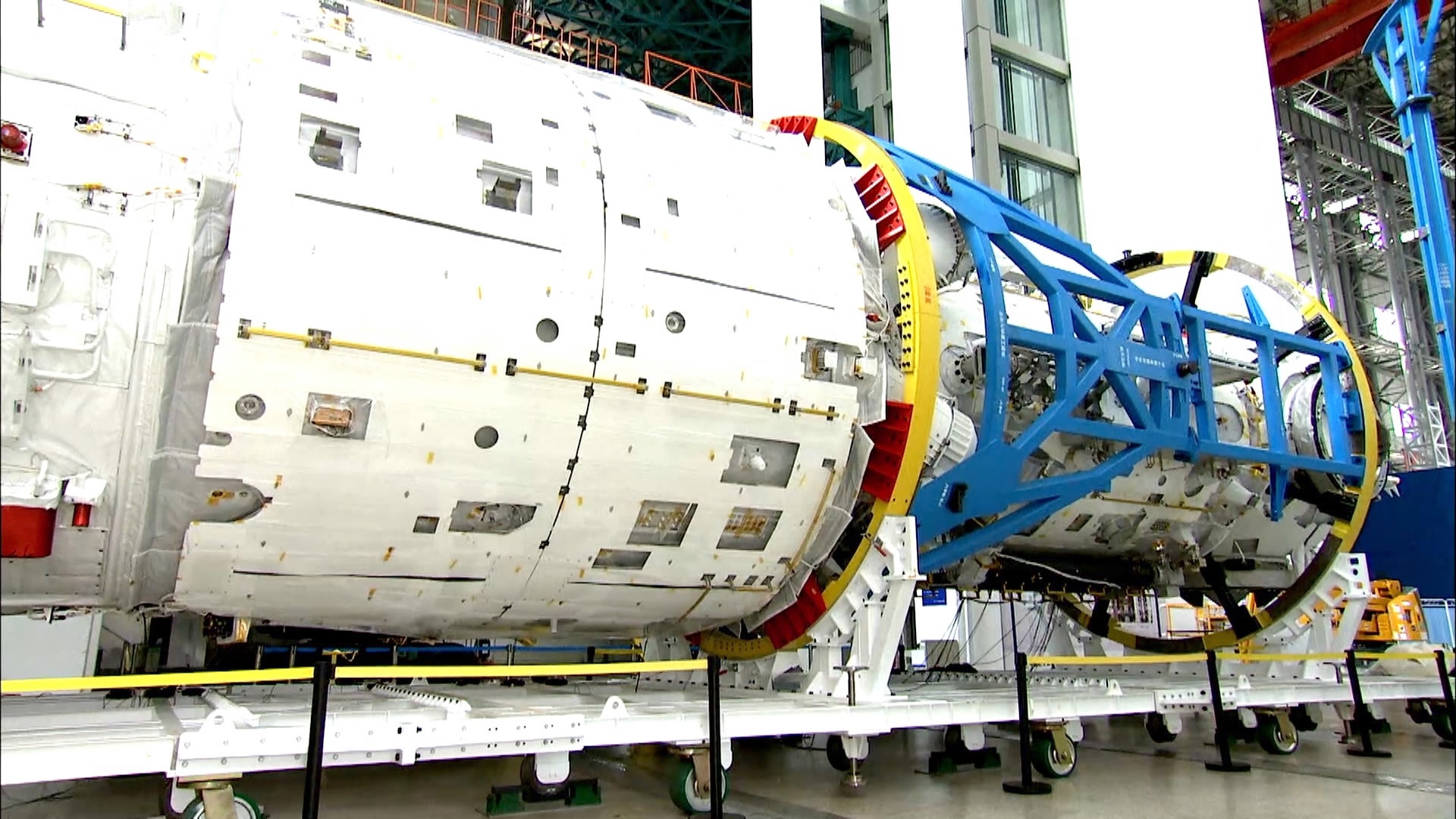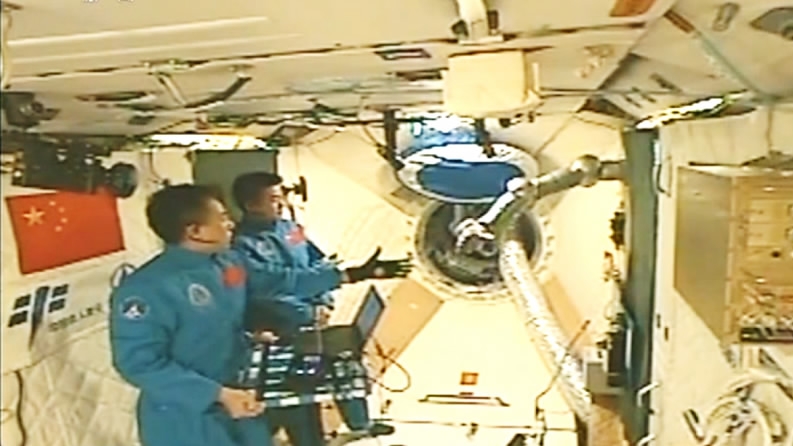
Space
22:27, 01-Apr-2018
Tianhe-1, the core module of China’s space station unveiled
By Jiang Jiao

The core module of China’s space station was unveiled at Tianjin Aerospace Town in north China on Saturday.
As the main control cabin of China’s space station, the core module named “Tianhe-1” holds habitable living quarters and working space for a crew of three astronauts, who will manage guidance, navigation and control for the entire space station.
The module also contains a non-habitable service section and a docking hub.
Besides Tianhe-1’s debut, engineers from China Aerospace Science and Technology Corporation (CASC) also showed the operation of a robotic arm.
Space robotic arms can be of great help to astronauts when it comes to grabbing, holding and moving objects. One of China’s self-designed robotic arms was put into use on the Tiangong-2 space lab in 2011, becoming the first of its kind that is directly controlled by astronauts in space.

The robotic arm put into use on China's Tiangong-2 space lab. /File photo
The robotic arm put into use on China's Tiangong-2 space lab. /File photo
As China’s space technology continues to develop, astronaut training for space station missions also keeps up, including both theoretical study and hands-on training, such as mechanical arms operation and extravehicular activities.
“After Shenzhou-11 mission, China’s manned space engineering entered a space-station era,” said Huang Weifen, deputy chief designer of Astronaut Center of China.
In early March this year, CASC said that the Tianhe-1 module would be launched on board a new-generation Long March-5 heavyweight carrier rocket in 2018 and followed by a series of launches for other components of the space station, including two space labs, which will dock with the core module while in space, in the next four years or so.
(With input from Xinhua)

SITEMAP
Copyright © 2018 CGTN. Beijing ICP prepared NO.16065310-3
Copyright © 2018 CGTN. Beijing ICP prepared NO.16065310-3